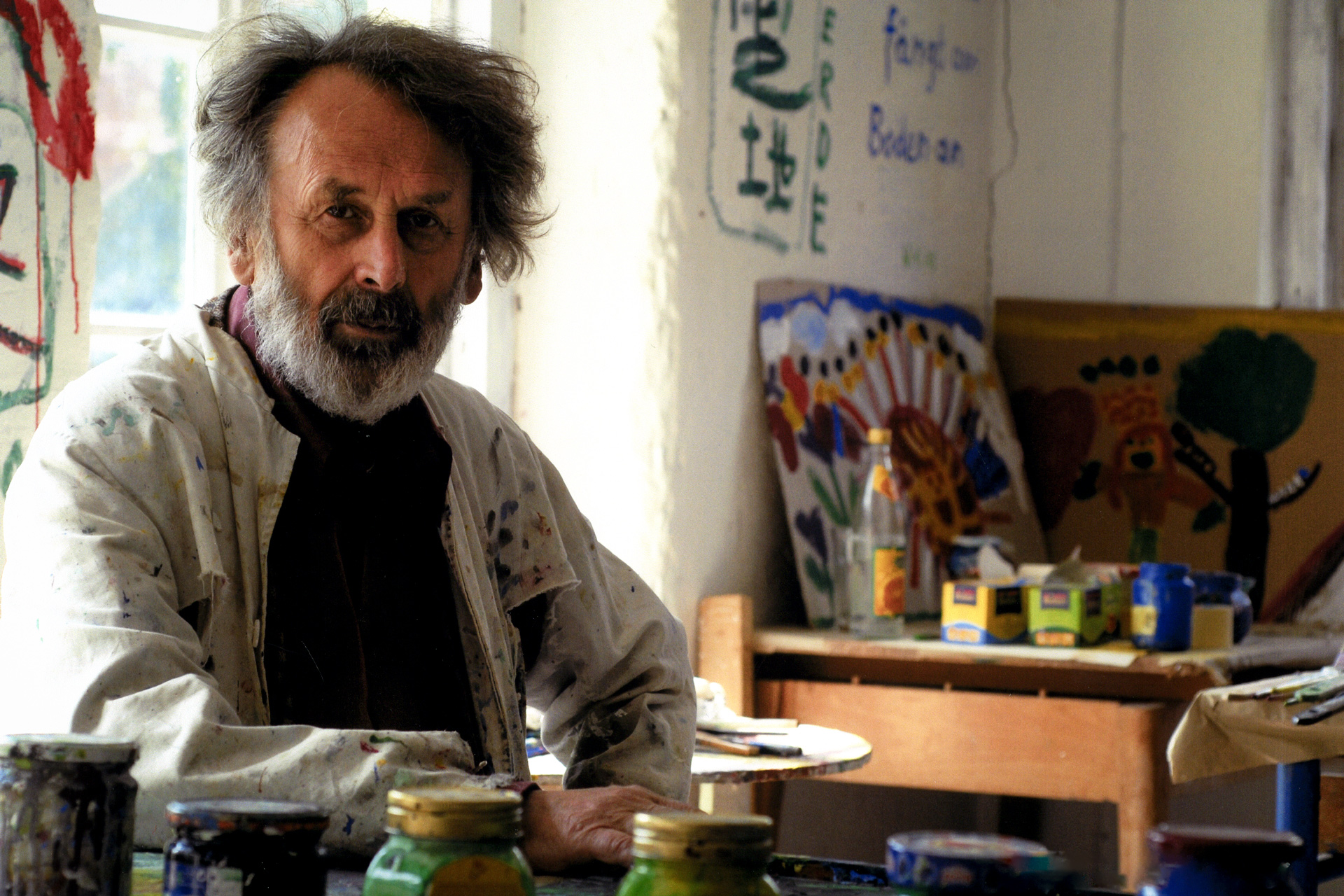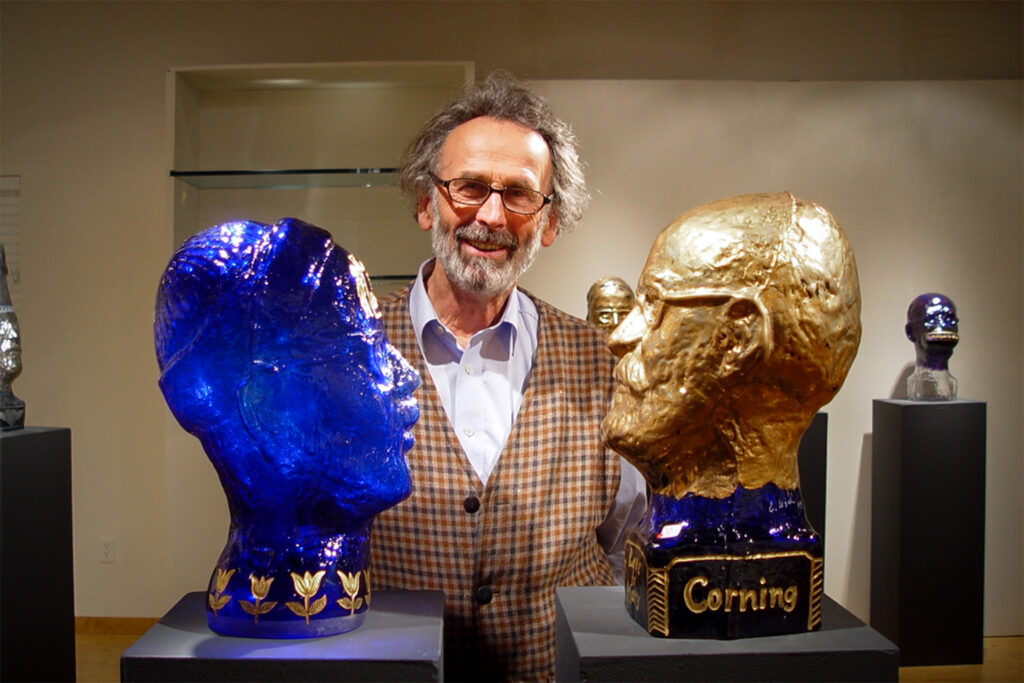Erwin Eisch

Erwin Eisch and the art of glass
Power, dedication and a good dose of irony
The floating of his figures is a stylistic feature of Eisch's art in all areas. It is both an expression of his own sense of space in relation to the earth and the cosmos as well as a result of his impressions of Baroque mural painting, which accompanied him from a young age, particularly in the example of the ceiling painting by Franz Anton Rauscher in the Frauenau parish church of the Assumption of the Virgin Mary. He is and remains a painter and draughtsman in equal measure. In Erwin Eisch, it is important to recognise the idiosyncratic painter who, with strength, dedication and a good dose of wit and irony, takes us into a pictorial world that can give us new insights and perspectives. His drawings show a tricky, superficial humour, which is usually expressed in the title, such as "Whenever I'm blue". His paintings are more challenging - they are usually brittle and uncomfortable, they do not impose themselves, but want to be contemplated for a long time and in peace, in order to make their own world, the cosmos created by the artist, transparent to us."The end of art became the programme".
"At the end of the 1950s, I came into contact with the Spur group at the Munich Academy. And we were all impressed by Tachism and Art Informel at that time. But I soon realised that there was no further development for me. Social criticism was dominant, the student revolt of 1968 was already noticeable. The end of art became the programme. So Max Strack, Gretl Stadler and I founded the Radama group in 1960. With the memorial exhibition for Bolus Krim in 1961, in which we presented the failure of avant-garde art at the time, I said goodbye to the Munich art scene. In 1962, Gretl and I got married and moved to Frauenau. There was the Eisch family's glassworks there and I picked up where I started making glass in 1952. It wasn't until the end of the 70s that painting became my subject again. The search for the figure began, abstraction took a back seat. The painting process became my path to the picture, to life and to vitality." (Erwin Eisch in an interview with Masahiro Hochida, 2002)
Erwin Eisch and his wife Gretel Eisch both passed away in 2022.

Erwin Eisch has been honoured with various awards
- 1977 Prize of honour, Coburg Glass Prize
- 1982 Honory Membership G.A.S.
- 1985 1st prize Coburg Glass Prize
- 1987 East Bavaria Culture Prize
- 1992 Krystallnacht Project, Gold Award for "My love to Anne Frank", American Interfaith Institute Philadelphia
- 1995 Lifetime Achievement Award G.A.S.
- 2002 Lifetime Achievement Award, Urban Glass, Brooklyn, NY

By loading the video, you accept YouTube's privacy policy.
Learn more

By loading the video, you accept YouTube's privacy policy.
Learn more

By loading the video, you accept YouTube's privacy policy.
Learn more
